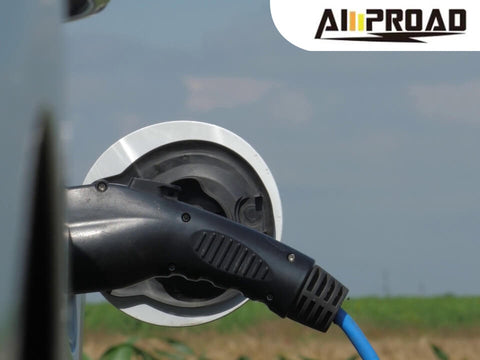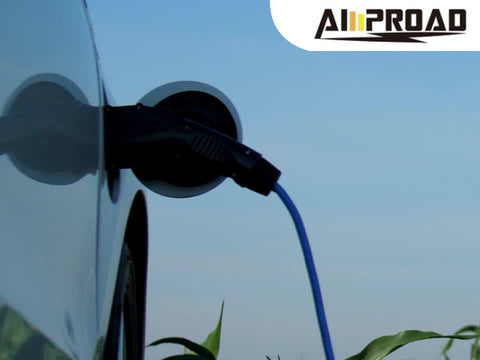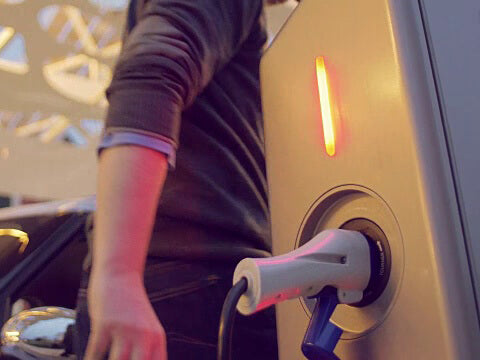How Can One Extend the Lifespan of an EV Battery Through Charging Practices?
Apr 27, 2024

In the age of electric vehicles (EVs), understanding how to extend your battery's lifespan is paramount. Not only does it ensure your car's longevity, but it also enhances its performance and value. By delving into the intricacies of charging practices, we uncover the crucial factors that influence your EV battery's health. From frequency and timing of charges to the speed and level at which you charge, every decision impacts its longevity. In this article, we'll explore the best practices to preserve your battery's lifespan, covering everything from voltage control to avoiding extreme conditions. Whether you're a seasoned EV owner or considering joining the electric revolution, mastering these charging techniques will empower you to get the most out of your vehicle, both now and in the years to come.
Understanding EV Battery Basics
Overview of the composition and structure of EV batteries
EV batteries are the heart of electric vehicles, powering their performance and range. These batteries typically consist of lithium-ion cells arranged in modules or packs, encased in protective housings within the vehicle. The chemistry of these cells, often lithium nickel manganese cobalt oxide (NMC) or lithium iron phosphate (LFP), determines their energy density and durability. Understanding this composition helps grasp the fundamental principles behind battery operation and maintenance.
Explanation of key factors affecting battery lifespan, such as temperature, depth of discharge, and charging habits
Several factors play pivotal roles in determining the lifespan of EV batteries. Temperature stands out as a significant influencer, as both extreme heat and cold can accelerate degradation. Depth of discharge, or how much of the battery's capacity is used during each cycle, also impacts longevity. Minimizing deep discharges helps preserve the battery's health over time. Additionally, charging habits greatly affect lifespan. Repeatedly charging to full capacity or allowing the battery to remain at high or low states of charge for extended periods can contribute to premature aging.
Understanding these factors empowers EV owners to make informed decisions regarding their charging practices. By avoiding exposure to extreme temperatures, practicing shallow discharges whenever possible, and adopting mindful charging habits, individuals can extend the lifespan of their EV batteries significantly. As the primary power source for electric vehicles, maintaining the health of EV batteries is crucial for maximizing performance, range, and overall satisfaction with the vehicle ownership experience.
Best Charging Practices to Extend EV Battery Lifespan
Charging Frequency and Timing
Optimal charging frequency to minimize stress on the battery
Maintaining an optimal charging frequency is essential for prolonging the lifespan of your EV battery. Rather than waiting until the battery is nearly depleted, aim for regular top-ups using your home EV charger. This approach helps prevent deep discharges, which can cause undue stress on the battery cells.
The importance of avoiding frequent deep discharges
Frequent deep discharges can accelerate battery degradation, reducing its overall lifespan. To mitigate this, avoid letting your battery drain completely before recharging. Instead, utilize your level 1 or level 2 portable EV charger for routine charging sessions, ensuring the battery remains within a moderate state of charge.
Tips for scheduling charging sessions for maximum efficiency and battery health
Plan your charging sessions strategically to optimize efficiency and battery health. Consider charging during off-peak hours to take advantage of lower electricity rates and lessen strain on the grid. Additionally, aim to avoid charging your battery to 100% capacity regularly, as this can lead to increased wear and tear over time.
Charging Speed and Level
Impact of charging speed (level 1, level 2 home EV charger, DC fast charger) on battery degradation
The charging speed, whether using a level 1, level 2 EVSE home charger, or DC fast charger, can significantly impact battery degradation. While fast chargers offer convenience, they may also cause more rapid wear and tear on the battery compared to slower charging methods. It's essential to strike a balance between convenience and battery longevity when selecting charging speeds.
Strategies for balancing convenience with battery longevity when selecting charging speeds
When choosing a charging speed, consider your immediate needs versus the long-term health of your battery. Reserve fast charging for occasions when you're pressed for time or embarking on longer journeys. For everyday charging, opt for slower methods such as level 1 or level 2 chargers, which place less stress on the battery cells.
Recommendations for avoiding excessive use of fast charging
While fast charging can be tempting for its quick replenishment of battery power, excessive use can lead to increased battery degradation. To preserve your battery's health, limit your reliance on fast chargers for day-to-day charging needs. Save fast charging for situations where rapid replenishment is necessary, and use slower charging methods whenever possible.
Charging Voltage and Temperature
Effects of charging voltage on battery health and degradation
Monitoring charging voltage is critical for maintaining battery health over time. Charging at high voltages can accelerate degradation, especially in conjunction with elevated temperatures. To mitigate this, consider utilizing your EVSE home charger at moderate charging voltages and avoiding fast charging in extreme conditions.
Importance of monitoring and controlling charging temperature
Temperature plays a crucial role in battery health, as both high and low temperatures can negatively impact performance and longevity. When charging your EV, monitor and control the charging temperature to ensure it remains within the optimal range. Avoid charging in extremely hot or cold environments, as this can lead to accelerated degradation.
Techniques for minimizing heat buildup during charging
To minimize heat buildup during charging, employ strategies such as parking your vehicle in shaded areas or using climate control systems to regulate temperature. By keeping the battery within its optimal temperature range, you can reduce the risk of thermal stress and prolong its lifespan.
Avoiding Extreme Conditions
Risks associated with charging in extreme temperatures (both hot and cold)
Charging your EV in extreme temperatures, whether hot or cold, poses significant risks to battery health. High temperatures can accelerate chemical reactions within the battery, leading to degradation, while cold temperatures can reduce battery efficiency and capacity. Avoid charging in extreme conditions whenever possible to preserve battery lifespan.
Tips for mitigating the impact of extreme weather conditions on battery lifespan
When extreme weather is unavoidable, take steps to mitigate its impact on your battery. Park your EV in shaded areas or garages to shield it from direct sunlight and excessive heat. In cold weather, consider pre-conditioning the battery before charging to ensure optimal performance.
Importance of parking in shaded areas or using climate control systems to regulate temperature
Parking your EV in shaded areas or utilizing climate control systems can help regulate the temperature of the battery during charging. By minimizing exposure to extreme temperatures, you can protect your battery from thermal stress and prolong its lifespan.
Utilizing Advanced Charging Features and Technologies
Overview of advanced charging features offered by EV manufacturers
EV manufacturers have introduced innovative charging solutions to enhance the efficiency and lifespan of batteries. Among these, the AMPROAD dual-use level 1 and level 2 EV charger stands out for its versatility and customization options. This charger allows users to adjust both the amperage and charging time, providing greater control over the charging process. With the ability to tailor the charging parameters to specific needs, EV owners can minimize stress on the battery and maximize its longevity.
Benefits of smart charging systems and software updates in optimizing battery health
Smart charging systems and software updates play a crucial role in optimizing battery health. These technologies enable EVs to communicate with charging infrastructure, allowing for more precise control over the charging process. By analyzing factors such as battery temperature, state of charge, and charging speed, smart systems can adjust charging parameters in real-time to minimize degradation and prolong battery lifespan. Additionally, regular software updates ensure that EVs remain equipped with the latest charging algorithms and optimization techniques, further enhancing battery performance and longevity.
Exploring regenerative braking and its role in preserving battery capacity
Regenerative braking is another advanced technology employed by EV manufacturers to preserve battery capacity. This system recaptures kinetic energy during braking and converts it into electrical energy, which is then stored back in the battery. By reducing reliance on traditional friction brakes, regenerative braking not only improves overall vehicle efficiency but also reduces wear and tear on the braking system and extends battery lifespan. As EV technology continues to evolve, innovations like regenerative braking will play an increasingly important role in maximizing the sustainability and longevity of electric vehicles.
Maintenance Tips for Prolonging EV Battery Lifespan
Regular battery health checks and diagnostics
Regular battery health checks and diagnostics are essential for prolonging the lifespan of your EV battery. Schedule routine inspections with a qualified technician to assess the overall health and performance of the battery. This includes monitoring key metrics such as state of charge, voltage, and internal resistance. Identifying and addressing any potential issues early on can prevent further degradation and ensure optimal battery function.
Importance of software updates for optimizing charging algorithms
Software updates play a critical role in optimizing charging algorithms and maximizing battery health. Manufacturers regularly release updates that fine-tune charging parameters and algorithms based on real-world data and feedback. These updates may improve charging efficiency, reduce degradation, and enhance overall battery performance. Ensure your EV is up-to-date with the latest software versions to take full advantage of these optimizations and prolong your battery's lifespan.
Tips for long-term storage and preservation of battery capacity
When storing your EV for an extended period, take precautions to preserve the battery capacity. Firstly, ensure the battery is charged to around 50% capacity before storage, as storing a fully charged or fully depleted battery can accelerate degradation. Secondly, store the vehicle in a cool, dry environment to minimize temperature fluctuations, which can affect battery health. Finally, consider investing in a battery maintainer or trickle charger to keep the battery topped up and prevent self-discharge during storage. By following these tips, you can safeguard your battery's capacity and extend its lifespan while your EV is not in use.C. Call to action for EV owners to implement these practices for a sustainable and cost-effective driving experience.
FAQs / People Also Ask
What role do temperature and voltage play in battery health?
Temperature and voltage significantly impact battery health. Avoid charging in extreme temperatures, as both hot and cold environments can degrade the battery. Additionally, monitor charging voltage to prevent overcharging, which can lead to premature degradation.
Are software updates important for EV battery health?
Yes, software updates are crucial for optimizing charging algorithms and maximizing battery performance. Regular updates ensure that your EV remains equipped with the latest optimizations, improving charging efficiency and prolonging battery lifespan.
How can I preserve battery capacity during long-term storage?
Before storing your EV, charge the battery to around 50% capacity and store it in a cool, dry environment. Additionally, consider using a battery maintainer or trickle charger to keep the battery topped up and prevent self-discharge during storage.
What are the benefits of regenerative braking for battery health?
Regenerative braking recaptures kinetic energy during braking, reducing wear and tear on the braking system and extending battery lifespan. By utilizing regenerative braking, you can improve overall vehicle efficiency and preserve battery capacity.
What are the signs that my EV battery may need maintenance?
Signs of potential battery issues include reduced range, slower charging times, and irregularities in charging behavior. If you notice any of these signs, it's recommended to have your battery inspected by a qualified technician to diagnose and address any issues promptly.





